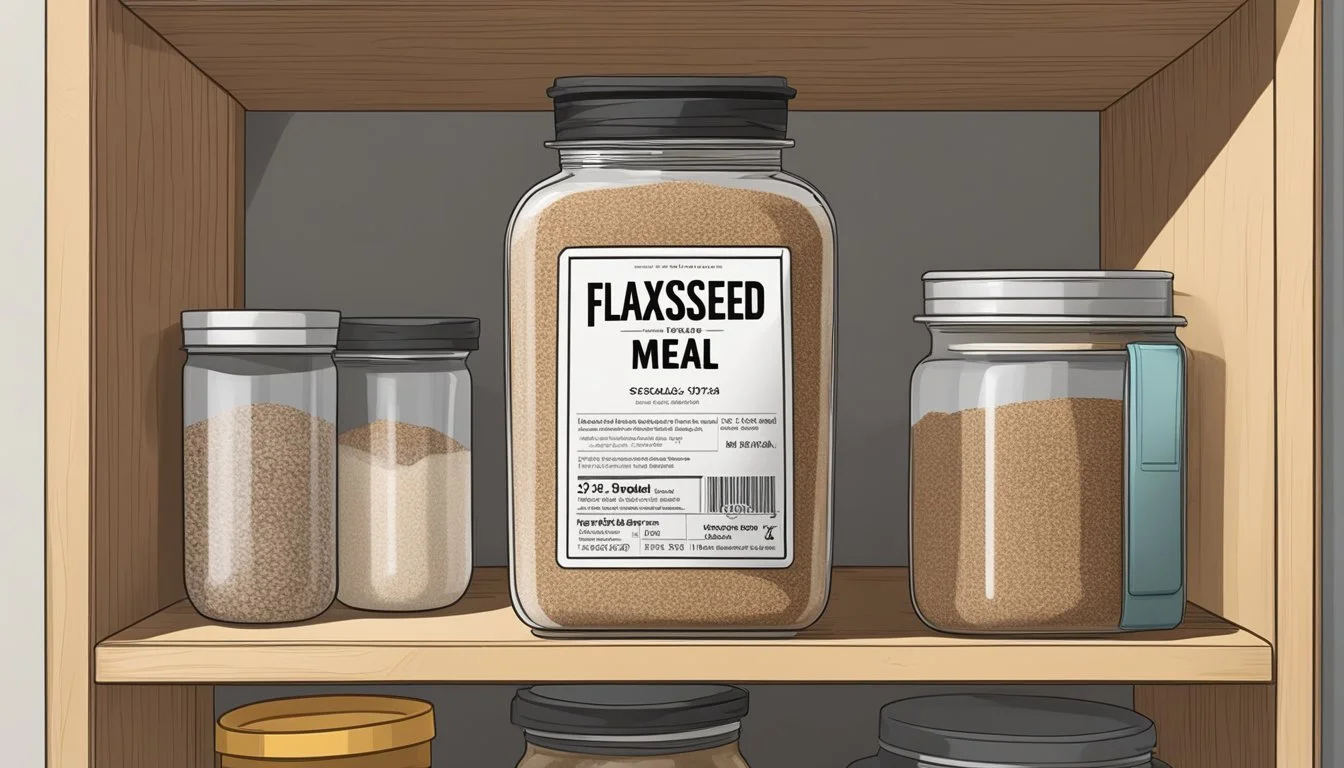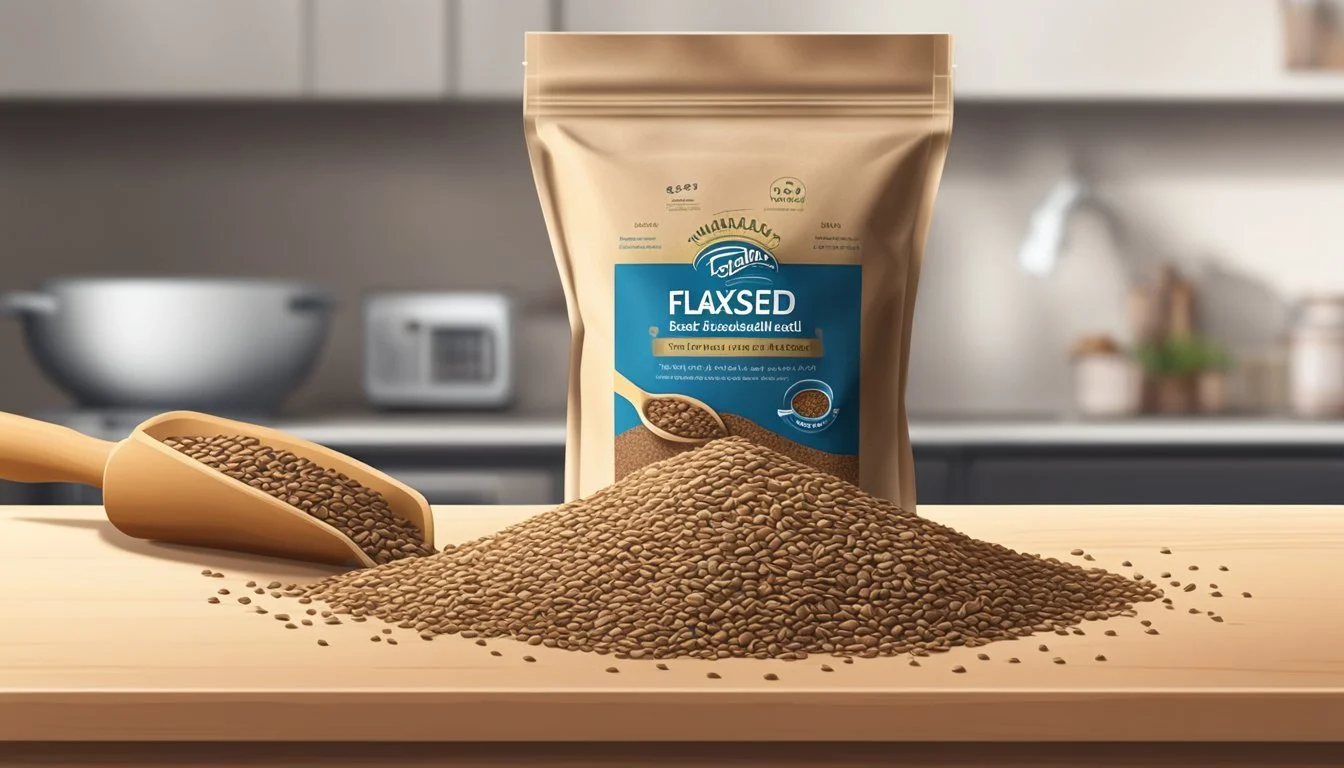Does Flaxseed Meal Go Bad?
Understanding Shelf Life and Storage
Flaxseed meal, known for its health benefits, is a popular addition to many diets, but it does have a limited shelf life. The rich content of omega-3 fatty acids in flaxseed meal makes it susceptible to spoilage because these oils can become rancid when exposed to certain conditions over time. Rancidity not only affects the taste and smell of the flaxseed meal but also diminishes its nutritional value. Therefore, proper storage is crucial to maintaining the freshness and extending the shelf life of flaxseed meal.
The shelf life of flaxseed meal can vary depending on how the meal is processed, packaged, and stored. Consumers can typically rely on labeled 'best by' dates as a guide, but one must also recognize the signs of spoilage, such as a bitter or off smell, which indicate that the meal is no longer suitable for consumption. To maximize the shelf life, flaxseed meal should be stored in a cool, dark place and ideally refrigerated or frozen, especially after opening.
Understanding the factors that contribute to the spoilage of flaxseed meal can help consumers make informed decisions about purchasing and storing this nutritious food. By recognizing that flaxseed meal is perishable and by implementing proper storage techniques, individuals can ensure they reap the benefits of flaxseed meal without compromise.
Understanding Flaxseed Meal
Flaxseed meal, the ground form of whole flaxseeds, is a concentrated source of nutrition and offers an array of health benefits. This section delves into its fundamental characteristics, nutritional makeup, and the advantages it provides to human health.
The Basics of Flaxseed Meal
Flaxseed meal is created by grinding flaxseeds, which are seeds from the flax plant (Linum usitatissimum). This process increases the seed’s digestibility and the availability of its nutrients. Traditionally used for its fibrous qualities in the production of linen, the seeds themselves have gained popularity as a health food. With a subtle, nutty flavor, flaxseed meal is versatile and can be incorporated into various recipes, from baked goods to smoothies.
Nutritional Profile
The meal inherits a rich nutritional profile from the tiny flaxseeds, renowned for their high content of:
Nutrient Type Benefit Omega-3 Fatty Acids Supports heart health and reduces inflammation Fiber Aids in digestion and promotes satiety Lignans Exhibits antioxidant properties Protein Contributes to muscle repair and growth
In addition to these key nutrients, flaxseed meal contains vitamins and minerals that are integral to overall health, such as vitamin B1, magnesium, and selenium.
Health Benefits of Flaxseed
Consuming flaxseed meal can contribute positively to one's health. Its rich omega-3 content is beneficial for cardiovascular health, potentially reducing the risk of heart disease. The fiber present in the meal helps maintain digestive regularity and can assist in managing blood sugar levels. The lignans found in flaxseeds have estrogenic properties and may have a role in preventing certain types of cancer. Furthermore, as a plant-based source of protein, flaxseed meal is a valuable addition to vegetarian and vegan diets.
Shelf Life and Spoilage
Flaxseed meal, known for its nutritional benefits, is susceptible to spoilage mainly due to its high content of omega-3 fatty acids. Proper storage is crucial to maintain its quality over time. Rancidity is a common issue, and recognizing the signs of spoilage is important for ensuring that the flaxseed meal consumed is fresh and safe.
Factors Affecting Shelf Life
Several factors influence the shelf life of flaxseed meal:
Storage Conditions: Flaxseed meal should be stored in a cool, dark place, ideally in an airtight container. Exposure to heat, light, or moisture can accelerate spoilage.
Packaging: Proper packaging can extend shelf life by protecting flaxseed meal from air and moisture.
Ground vs. Whole: Ground flaxseed meal has a shorter shelf life than whole flaxseeds due to a greater surface area exposed to air, which can increase the rate of oxidation.
Form Shelf Life Whole Flaxseeds 1 to 2 years Ground Flaxseed 3 to 4 months in refrigerator or freezer
Signs of Spoilage
The indicators that flaxseed meal has gone bad are:
Smell: A fresh, nutty aroma that changes to a sharp, bitter, or sour smell is a sign of rancidity.
Taste: Any bitterness or off flavors can indicate that the flaxseed meal is no longer fresh.
Color: While subtle changes may occur, a noticeable darkening might suggest spoilage.
Texture: The presence of mold or any clumps from moisture suggests that the flaxseed meal should not be consumed.
Impact of Rancidity
Rancidity affects flaxseed meal both nutritionally and in terms of safety:
Nutritional Value: Rancid flaxseed meal may have reduced levels of beneficial omega-3 fatty acids.
Safety: Consuming rancid flaxseed meal can potentially lead to food-borne illness or an unpleasant gastric experience.
Expiration Date: While not an absolute indicator, the expiration date can provide a guide as to how long flaxseed meal might remain fresh when unopened and stored under ideal conditions.
Proper Storage Practices
Storing flaxseed meal correctly is crucial for maintaining its freshness and nutritional quality. The primary goals are to prevent oxidation and mold growth which can spoil the meal.
At Home Storage Solutions
Flaxseed meal should be stored in a cool, dry place, such as a pantry, to ward off moisture. Users should avoid exposing it to heat and direct sunlight as these can accelerate the oxidation process. If the pantry is not an option, placing flaxseed meal in the refrigerator can also protect its oils from turning rancid.
Pantry: Store in a cool, dark, and dry area.
Refrigerator: Ideal for prolonging freshness once opened.
Extending Flaxseed Meal's Freshness
To extend the freshness of flaxseed meal after opening, it can be freezed to significantly slow down the oxidation process. This halts the breakdown of its omega-3 fatty acids. Users should ensure that it's properly sealed prior to freezing to prevent freezer burn and absorption of other food odors.
Freeze: Use an airtight container or freezer-safe bag.
Best Containers for Preservation
Flaxseed meal should always be kept in an airtight container to shield it from air and moisture. Glass jars with airtight seals are excellent options for preserving the meal's quality. These containers prevent air from entering and causing oxidation, which is critical in preserving the taste and health benefits of flaxseed meal.
Glass Jar: A sealable glass jar provides an airtight, moisture-free environment.
Airtight Containers: Protect against oxygen and maintain flavor and freshness.
Using Flaxseed Meal in Recipes
Flaxseed meal is a versatile ingredient that enhances recipes with its nutritional benefits. It can replace eggs, add a nutty flavor to smoothies and baked goods, and is often ground for better nutrient absorption.
Flaxseed as an Egg Alternative
Consumers looking for a plant-based egg substitute find flaxseed meal an excellent choice. To replace one egg, they simply need to mix one tablespoon of ground flaxseed with three tablespoons of water and let it sit for a few minutes to thicken. This mixture, often called a "flaxseed egg," is ideal for binding ingredients in recipes such as pancakes, muffins, and cookies.
Creative Culinary Uses
Flaxseed meal is not only limited to baking; it's a wonderful addition to many dishes. Individuals often incorporate it into smoothie recipes for an extra fiber boost or sprinkle it on yogurt as a topping. It's also a great thickener for soups and sauces. The key is to start with a small amount and adjust according to the desired thickness and texture.
Incorporating Flaxseed Meal into Baking
When baking, incorporating flaxseed meal can improve nutrition without compromising taste. Those who bake with flaxseed meal typically use it in bread, muffins, and cookies. The recommended approach is to replace up to 15-20% of the flour with flaxseed meal to maintain the structure of the baked goods. For better results, consumers are advised to use freshly ground flaxseeds, as pre-ground meal can lose its potency over time.
Additional Considerations
When preserving flaxseed meal and ensuring its safety for consumption, it is crucial to adopt proper handling methods, be aware of disposal protocols for spoiled products, and seek guidance when necessary.
Handling and Safety Precautions
Proper handling of flaxseed meal is essential to maintain its rich nutritional benefits. Store the meal in airtight containers and keep it in the refrigerator or freezer to prolong shelf life and protect its unsaturated fats from becoming rancid. Flaxseed meal should be kept away from direct sunlight and excessive heat, as these can trigger spoilage, indicated by a rancid smell or a bitter taste. Utilize the meal before the expiration date to enjoy its full nutritional benefits. If discoloration or an off-putting scent is detected, avoid consumption as it may lead to stomach upset.
Proper storage: Airtight containers, refrigerator/fridge, or freezer
Avoid: Sunlight, high temperatures, and after expiration date
Indicators of rancidity: Discoloration, bitter taste, or rancid smell
Disposal of Spoiled Flaxseed Meal
If flaxseed meal has gone bad, it is important to dispose of it safely to prevent consumption that could result in stomach upset. Spoiled flaxseed meal might contain contaminants or insects and should not be used, even for non-food purposes like making crackers. Wrap and seal the spoiled meal in appropriate packaging before discarding to avoid attracting bugs and pests.
Methods of disposal: Seal in packaging, then discard
Reasons for disposal: Possible presence of contaminants, insects, or rancid smell indicating spoilage
Consulting Professionals
If there are uncertainties about the safety and quality of flaxseed meal, a nutritionist or food safety expert should be consulted, especially regarding the meal's storage after processing and its impact on the overall diet. Experts can provide information on the potential nutritional benefits of flaxseed meal and how its unsaturated fats may be affected by different storage conditions, such as room temperature versus refrigeration.
Who to consult: Nutritionists, food safety experts
Why: To understand nutritional impact, proper storage, and safety conditions






